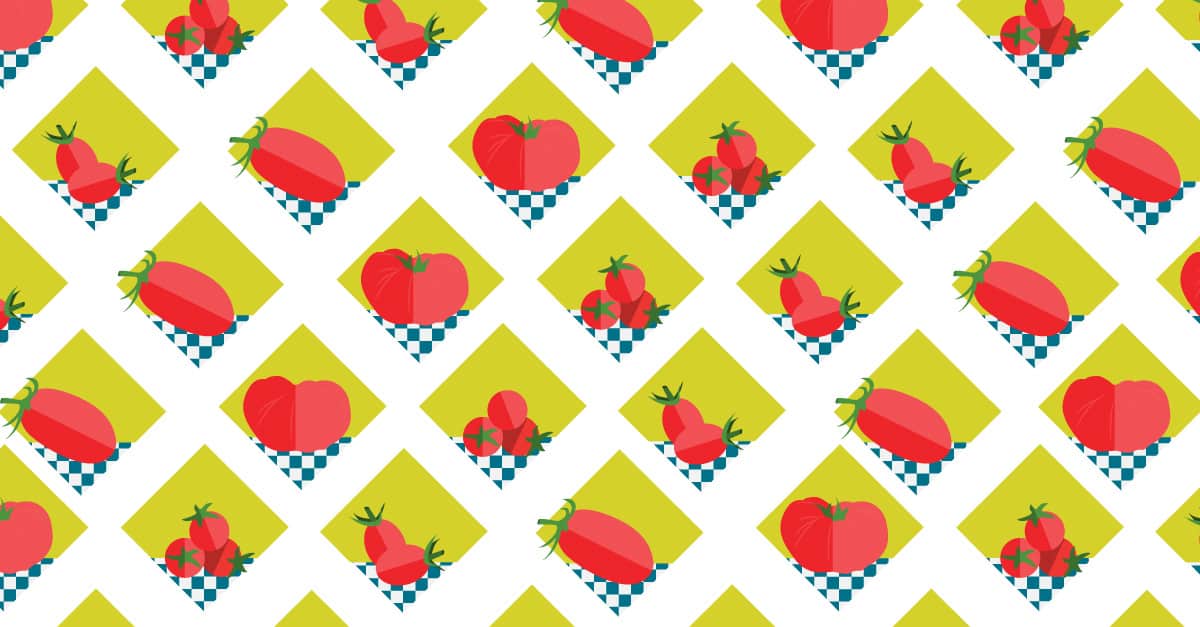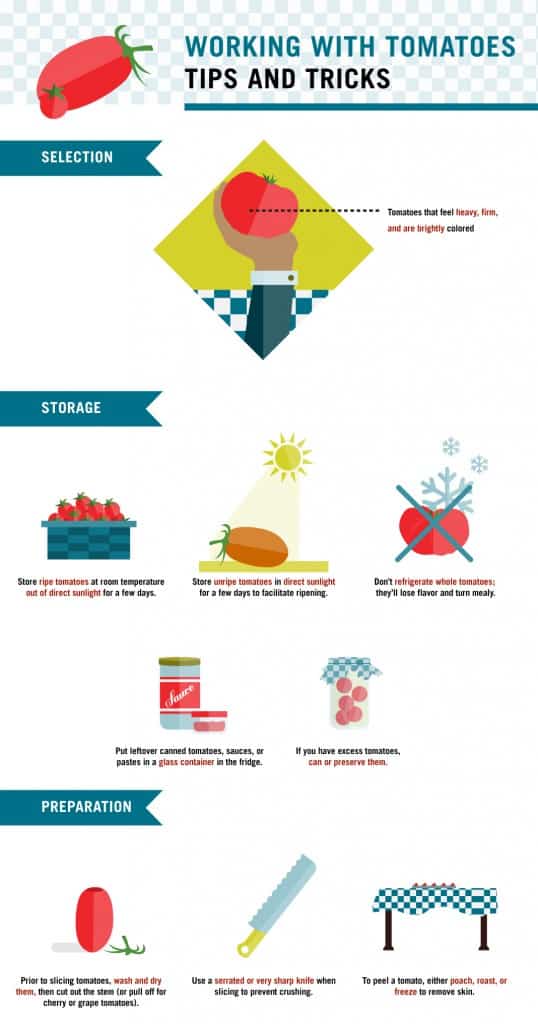 When and How to Use Different Tomato Varieties
When and How to Use Different Tomato Varieties
Thought kale was popular? Chew on this: Americans eat an average of 80 tons of tomatoes each year, making the fruit one of the most consumed types of produce and a staple in meals across the country.
Tomatoes are generally available for purchase year-round, though they taste freshest and contain more vitamins when consumed in season, which is typically during the summer months. Still, some varieties hold up better than others even in the middle of winter (more on that below).
Perusing a farmer’s stand or the produce section of the supermarket can be overwhelming because there are so many varieties of tomatoes available. Should you choose grape, Roma, heirloom? Which has the best flavor, and what will work best in that recipe you plan to make? Read on to learn the ins and outs of this versatile fruit.
Garden Varieties: How to Identify and Use Different Types of Tomatoes
Never get confused at the farmers’ market or in the kitchen again. Here’s an overview of each of the most common tomato varieties, as well guidelines for when and how to cook each one.
Beefsteak Tomatoes
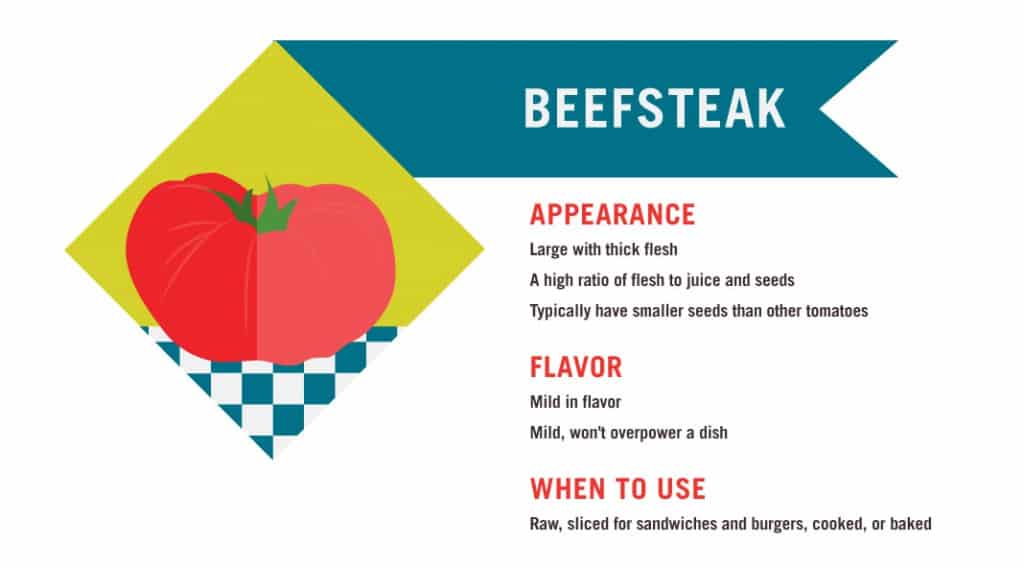
Beefsteaks are mild in flavor, which means they won’t overpower a dish. Their size makes them ideal for a raw complement to sandwiches or burgers, but they also produce great flavor when cooked. They’re freshest in the summer; depending on where you live, you may or may not be able to find quality beefsteaks year round. Try them in any of these recipes:
- Tomato Stack Salad with Corn and Avocado. Make this colorful side salad in the summer when the ingredients are freshest.
- Tomato, Squash, and Red Pepper Gratin. Serve this hearty dish to warm up on chilly days.
- Baked Tomatoes with Quinoa, Corn, and Green Chiles. Flavorful, gooey, and fun to eat, this is the ultimate healthy comfort food.
- Romaine Pesto and Egg-Stuffed Tomatoes. Warm and protein-rich, this meal is fit to serve any time of day.
- Homemade Vegetable Tomato Juice. This one’s simple: Chop up tomatoes and a few other veggies, add some seasonings, simmer everything in a pot, and then puree for a wholesome take on store-bought veggie juice.
Cherry Tomatoes
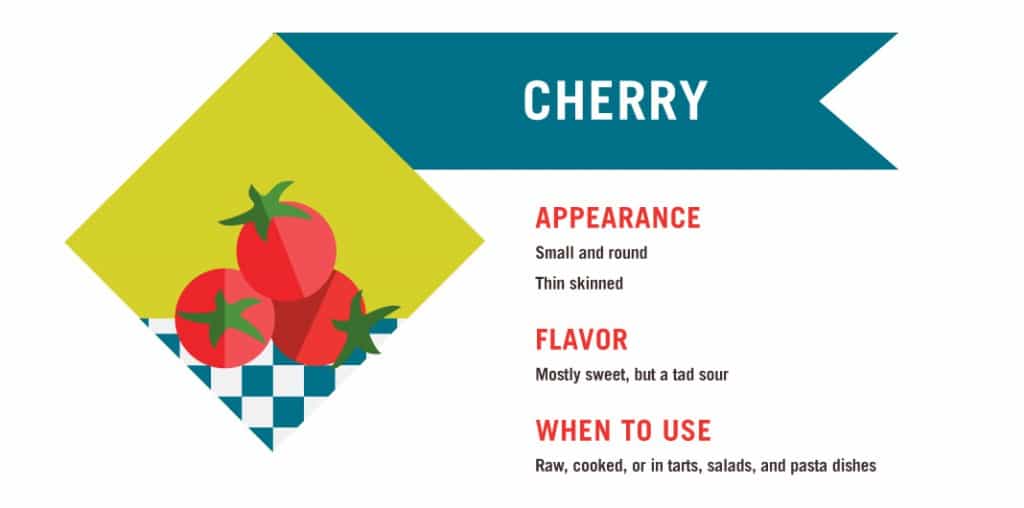
Because of their thin skins, cherry tomatoes do not travel well, so seek them out at local farmers whenever possible. Cherry tomatoes are at peak flavor in the summer, but they retain flavor in the off-season better than some tomato varieties. Regardless of the time of year, cherry tomatoes offer the best flavor when cooked only for short periods of time; too long and the seeds can start to alter the flavor. Put cherry tomatoes to good use in the following recipes:
- Roasted Cherry Tomatoes. Roasting is a great way to use up tomatoes that are slightly past their prime. Roast a bunch of tomatoes, store them in the fridge, and add them to pastas, omelets, and sandwiches throughout the week.
- Spaghetti with Burst Cherry Tomatoes. Let tomatoes ripen for a few days prior to making this flavorful lunch or dinner. Swap in whole-wheat spaghetti for an even healthier dish.
- Polenta Tart with Roasted Cherry Tomatoes. Replace the crust with polenta in this savory, gluten-free dish.
- Roast Chicken Breasts with Tomato, Corn, and Avocado. This healthy meal is packed with protein, healthy fats, and vitamins—and it tastes great too.
- Grilled Tomato “Lollipop” Toasts. These cute grilled skewers make for a great appetizer that will wow dinner guests any night of the week.
Grape Tomatoes
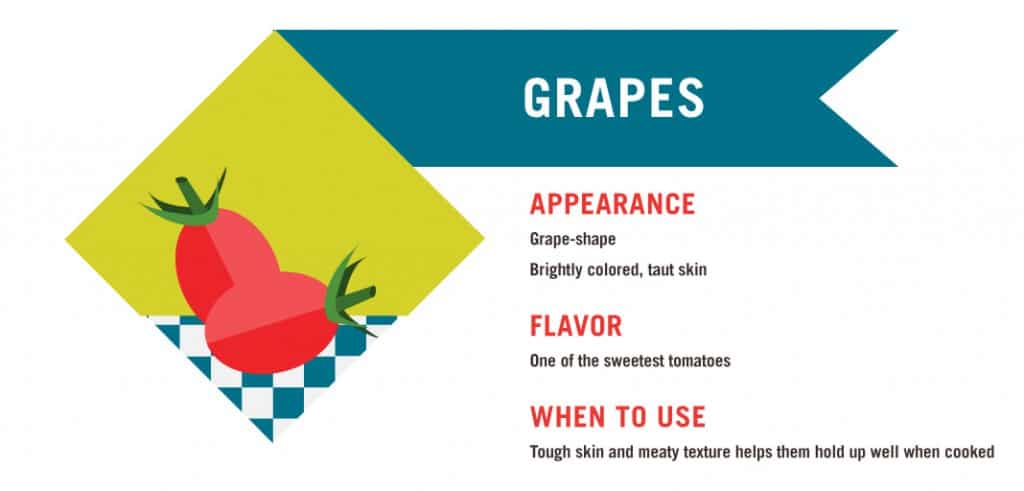
Grape tomatoes’ sweetness makes them ripen quickly, so they’re often some of the first tomatoes in season. Their hardiness allows them to travel well; while local varieties almost always have the best flavor, you can still find high-quality grape tomatoes at the supermarket. Start cooking with them in the early spring and use year-round.
- Asparagus, Tomato, and Spinach Frittata. Like a quiche without the crust, frittata is similar to a hardy, veggie-packed omelet. Toss in whatever veggies or meats you have on hand.
- Grape Tomato Salad with Soy Sauce. This fresh, summery recipe is quick to make and serves as a great side dish for lunch or dinner.
- Hamburger and Grape Tomato Pizza. Hearty, protein-rich, and filling, this pizza stands out from the pack thanks to the addition of fresh tomatoes. Use whole-wheat dough for a healthier twist.
- Grape Tomato, Olive, and Spinach Pasta. This Mediterranean-inspired dish is colorful, flavorful, and perfect for dinner (and lunch the next day).
- Chicken and Sausage Cacciatore with Grape Tomatoes. Cooking the tomatoes only briefly retains their fresh flavor. Pair the dish with slices of whole-grain bread and enjoy as a pick-me-up on a cold winter night.
Plum Tomatoes
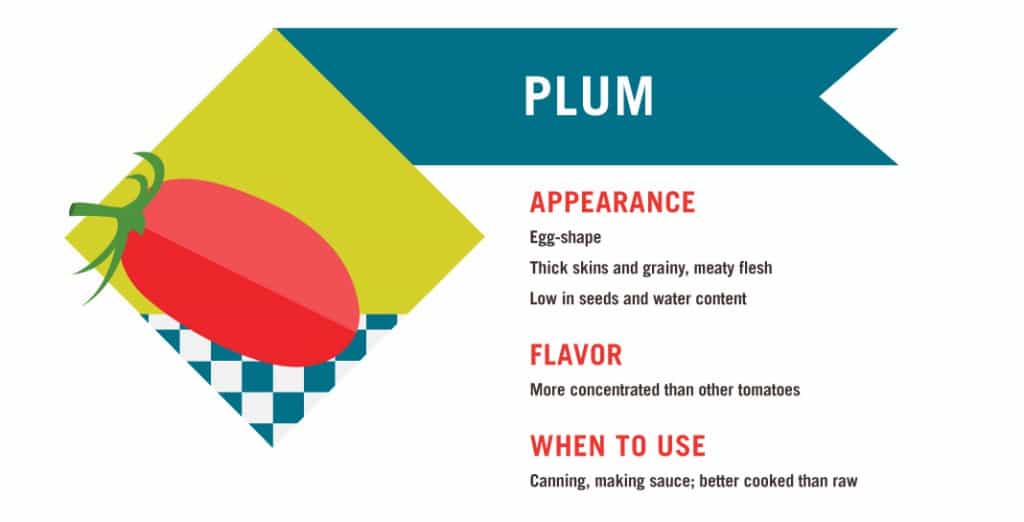
While eating one raw won’t hurt you, plum tomatoes’ flavor comes out when they’re cooked. As with all other tomatoes, plums are best in season—but they’re also one of the best tomatoes to cook with in the off-season because their flavor and texture is generally superior to greenhouse tomatoes. Enjoy plum tomatoes in the following recipes:
- Bruschetta with Rosemary, Roasted Plum Tomatoes, Ricotta, and Prosciutto. This rich appetizer could actually serve as a whole meal.
- Baked Plum Tomatoes. Simple and flavorful, this recipe is a great way to use up extra plum tomatoes before they go bad.
- Fresh Garden Tomato Sauce. This flavor-packed sauce takes the cake.
- Chicken Alfredo with Plum Tomatoes. The acidity of the tomatoes balances the creaminess of this comforting dish.
- Roasted Roma Tomato Lasagna. Hearty and protein-rich, this lasagna will satisfy the whole family.
Heirlooms and Other Varieties
Of course, no list of tomatoes would be complete without referencing the wonderful world of less mainstream varieties. Green tomatoes provide a spicy (and less sweet) flavor; yellow tomatoes are generally milder and less acidic than their red counterparts; and orange tomatoes tend to be fruity in flavor.
And then there are heirlooms. These range widely in size, color, and flavor. What heirlooms share in common is that each variety has been around for 50 years or more and does not contain genetically modified organisms (GMOs). Because heirlooms vary so widely, talk directly to the grower or seller in order to learn how to best work with a specific type. For the most part, heirlooms tend to be rich in flavor and taste great raw with just a drizzle of olive oil or a sprinkle of salt.
Tomatoes, tomahtoes: Perhaps they’re not as confusing as we thought. No matter how you pronounce it, they taste great and they’re ripe for the cooking.
